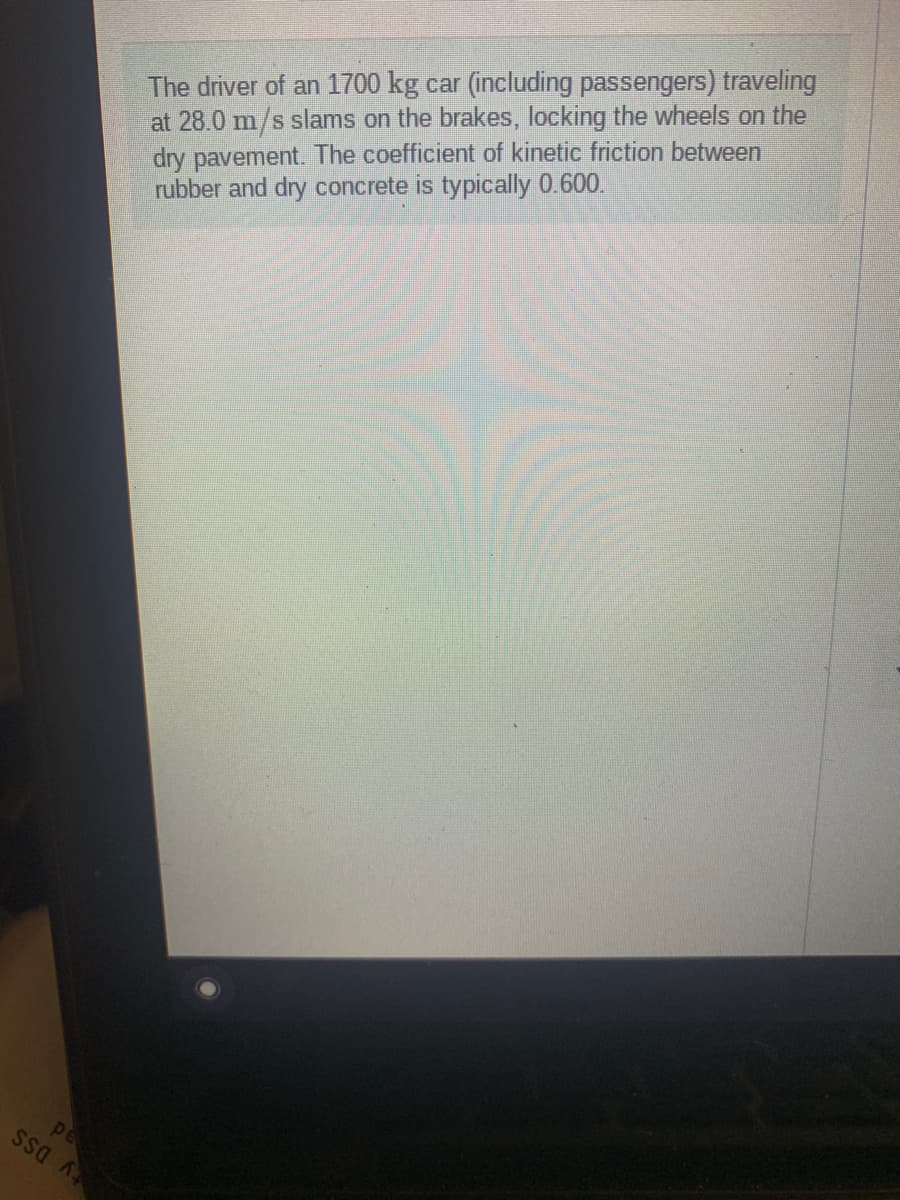The driver of an 1700 kg car (including passengers) traveling at 28.0 m/s slams on the brakes, locking the wheels on the dry pavement. The coefficient of kinetic friction between rubber and dry concrete is typically 0.600.
The driver of an 1700 kg car (including passengers) traveling at 28.0 m/s slams on the brakes, locking the wheels on the dry pavement. The coefficient of kinetic friction between rubber and dry concrete is typically 0.600.
University Physics Volume 1
18th Edition
ISBN:9781938168277
Author:William Moebs, Samuel J. Ling, Jeff Sanny
Publisher:William Moebs, Samuel J. Ling, Jeff Sanny
Chapter6: Applications Of Newton's Laws
Section: Chapter Questions
Problem 6.10CYU: Check Your Understanding Find the terminal velocity of a 50-kg skydiver falling in spread-eagle...
Related questions
Topic Video
Question
Use the work energy principle to calculate how far the car will travel before stopping.
How far would the car travel if it were going twice as fast?

Transcribed Image Text:The driver of an 1700 kg car (including passengers) traveling
at 28.0 m/s slams on the brakes, locking the wheels on the
dry pavement. The coefficient of kinetic friction between
rubber and dry concrete is typically 0.600.
Expert Solution
This question has been solved!
Explore an expertly crafted, step-by-step solution for a thorough understanding of key concepts.
This is a popular solution!
Trending now
This is a popular solution!
Step by step
Solved in 4 steps

Knowledge Booster
Learn more about
Need a deep-dive on the concept behind this application? Look no further. Learn more about this topic, physics and related others by exploring similar questions and additional content below.Recommended textbooks for you

University Physics Volume 1
Physics
ISBN:
9781938168277
Author:
William Moebs, Samuel J. Ling, Jeff Sanny
Publisher:
OpenStax - Rice University

Physics for Scientists and Engineers: Foundations…
Physics
ISBN:
9781133939146
Author:
Katz, Debora M.
Publisher:
Cengage Learning

University Physics Volume 1
Physics
ISBN:
9781938168277
Author:
William Moebs, Samuel J. Ling, Jeff Sanny
Publisher:
OpenStax - Rice University

Physics for Scientists and Engineers: Foundations…
Physics
ISBN:
9781133939146
Author:
Katz, Debora M.
Publisher:
Cengage Learning